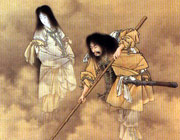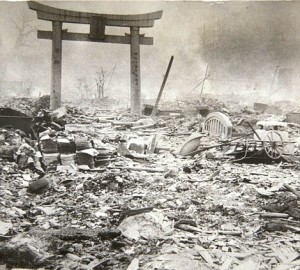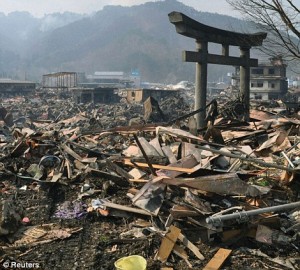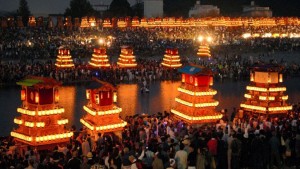Shintoism
Shintoism is based on a belief in, and worship of, kami. Kami can be elements of the landscapes or forces of nature (sometimes these forces are personified as they were in Ancient Greece and Rome, but the personifications are not seen as deities).
Shintoism has no gods. Nor does it provide a moral code as most other religions do. It is thus not concerned with instructing one on how to live in the world. It also does not try to explain how the world works. Shintoism simply focuses on discovering ways of communicating with kami.
Because the focus of Shintoism is on the ritual of offering to the kami and communicating with it, the people who practice is (mainly the Japanese) view Shintoism as a part of their culture and way of life more than as a religion.
Kami:
–Essences (or spirits) that exist in and influence the world around us.
-Kami respond to human prayers.
-They can influence the course of natural forces and human events, either to answer the prayer or because the kami wishes to do so.
-They are a part of the world. They do not exist outside of it as some deities do.
-Izanami and Izanagi are the two most famous kami because they are seen as the creators of the Earth. They are also the parents of multiple kami (who rule over those aspects listed below). Izanami is a female kami whereas Izanagi is male. The former is the passive (yin) essence and the latter is the active (yang) essence. They balance each other out, as their children do with one another.
Source: http://www.bbc.co.uk/religion/religions/shinto/texts/stories_1.shtml
-Examples of kami
- Moon
- Sun
- Fire
- Water
- Earth
- Netherworld
-All of the kami has an opposite that balances it out. The moon and the sun kami balance each other out; fire and water; earth and netherworld (place of living vs. place of the dead).
Shrines:
-Can be found in the house (or right by one, at least) of a practitioner.
-Is devoted to one kami, but there can be multiple shrines in one family’s living area and each shrine is devoted to a different kami.
-There are also public shrines, such as the very famous entrance to one that has made Shintoism more well-known. The shrine entrance is called a torii, and one survived the atomic bomb blast at Nagasaki while another torii survived the 2011 tsunami.
-The image on the left is of Nagasaki after the Atomic bomb dropped in 1945. The image on the right is of Otsuchi after the tsunami in 2011. These two images depict the sturdiness of some elements against others.
-The New Year is a popular time of year for people to visit the public shrines and pay extra attention to the ones inside their own homes.
Shinto Festivals:
-They are called Matsuri.
-They reguire
- Purification
- An offering
- A Shrine
-“Festivals centre on particular kami, who are treated as the guests of honour at the event. The celebrations are very physical events, and may include processions, dramatic performances, sumo wrestling, and feasting. They are bright, colourful, and loud, aromatic with the smells of food, and involve much activity – these performance elements perhaps parallel in their own way the importance of aesthetic and sensual pleasingness in shrine worship” (http://www.bbc.co.uk/religion/religions/shinto/holydays/matsuri.shtml).
Source: http://www.houseofjapan.com/festivals/town-tries-to-outdo-the-big-boys-in-osaka-danjiri
Vocabulary:
-Kami- Spirit or essence that resides on Earth with humans and cares about humans and their suffering.
-Matsuri- Shinto shrine.
-Torii- Entrance gate to Shinto shrine.




